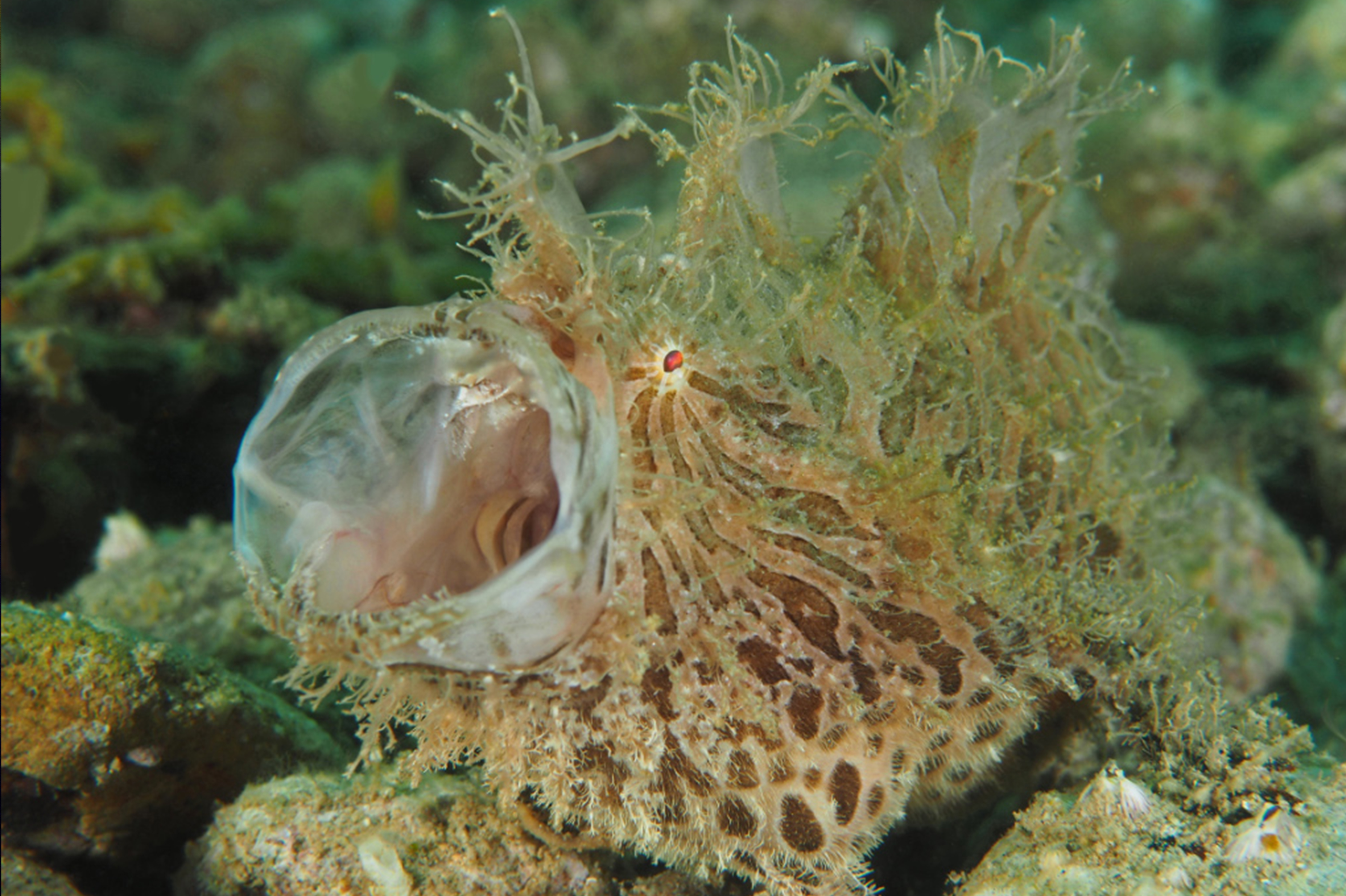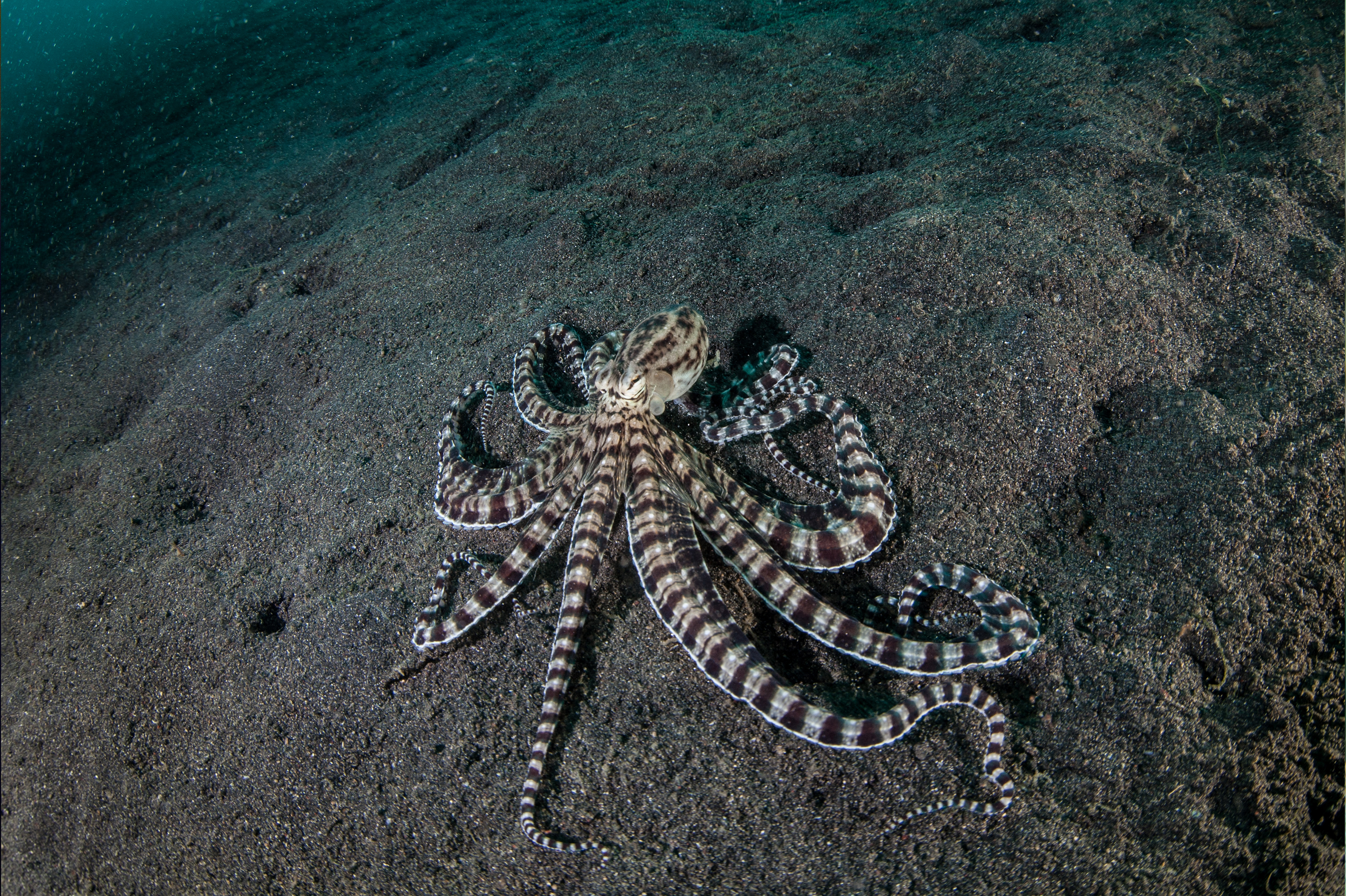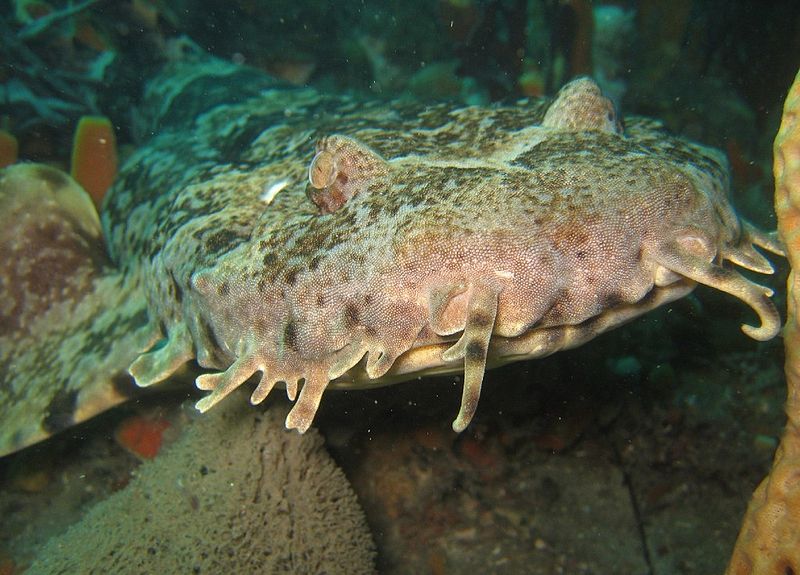4 Ocean Tricksters
Published by Ocean Conservancy
Every year, we landlubbers heartily partake in the tradition of April Fool’s Day—the one day it’s deemed acceptable (nay even expected), to pour salt in an unsuspecting glass of water or hide tiny photos of disgruntled cats everywhere around the office (and we mean everywhere). But for some ocean dwellers, pulling tricks on others is part of their way of life and in many cases, the only way to survive.
While there are many sea creatures that rely on tricks like camouflage or luring techniques, these four ocean tricksters are sure to blow any human pranks out of the water!
Frogfish


The frogfish is a bottom dweller that enjoys tropic waters and shallow reefs, slowly walking along the sea floor with their feet-shaped pectoral fins. They have small eyes and a large mouth that can expand twelve times its resting size! Though stubby and round, frogfish can be a variety of incredible colors and patterns that change to mimic their surroundings like coral and sponges, seaweed and sea floor. What makes the frogfish a true trickster though is their ability to use the spine from their dorsal fin as a rod-like structure to lure prey into their clutches—or in this case, bellies. Their spine takes on the appearance of a hyper shrimp, flashily bobbing around to attract prey like fish and crustaceans. As soon as one gets close, the frogfish will expand its massive mouth and suck them up—all happening in as little as one sixth of a second!
Leafy Sea Dragon


The leafy sea dragon is one of the most ornately camouflaged marine species. They are primarily found in temperate waters off the coast of Australia and are closely related to seahorses and pipefish (just don’t actually call them a seahorse because they will be offended). Leafy sea dragons vary in color from dark burgundy and brown to yellow and green, and can reach up to 35 centimeters or 14 inches. Their leaf-shaped appendages are how they got their name and help them to blend into kelp forests and seaweed beds. This characteristic helps them hide from predators as they are generally fragile and slow-moving creatures, using only their thin (almost transparent) pectoral and dorsal fins to swim.
Mimic Octopus


If Pistachio Disguisey is the Master of Disguise, then the mimic octopus is the eternal grandmaster overlord of disguise. Not only do these cephalopods possess color-changing cells (called chromatophores), they can also change their arms and movements in order to impersonate a number of toxic sea creatures like the lionfish, sole (or flatfish), sea snakes, jellyfish and more! Mimic octopuses are agile hunters that forage in the shallow waters of the Indo-Pacific. When undisguised, the mimic octopus is approximately two feet in length with brown and white stripes.
Wobbegong Shark


Also known as carpet sharks, the wobbegong is probably the most un-shark-like shark there is. Instead of roaming the open ocean, wobbegongs are sluggish and inactive, blending into the ocean floor and lying in wait for anything that is unfortunate enough to cross its path. They are native to the western Pacific Ocean (near Australia) and are often found near shallow reefs, piers and sandy bottoms but can also be found in waters up to 715 feet deep. Wobbegongs are shaped a bit differently than typical sharks and are wider across than long, with tiny fins. Additionally, they possess beard-like appendages around their mouth that act as lures for potential prey like fish and crustaceans. Similar to frogfish, when prey get too close, the wobbegong shark will quickly snap their jaws and gobble them up. And if prey is too big? No problem, the wobbegong will simply clamp their jaws onto them until it surrenders.
Sign up for our emails!
The post 4 Ocean Tricksters appeared first on Ocean Conservancy.
Read the full article at: https://oceanconservancy.org/blog/2019/04/01/4-ocean-tricksters/


